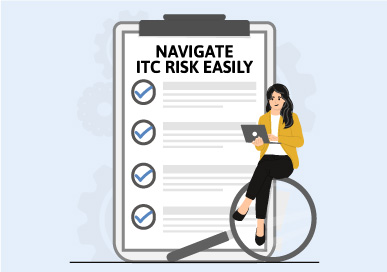- What is Accrual Basis of Accounting?
- How Does Accrual Basis of Accounting Works?
- Features of Accrual Basis of Accounting
- What is Accrued Expenses
- Accrued Expenses Recognition Rules
- Examples of Accrual Basis of Accounting and Accrued Expenses
- Differences Between Accrual Basis of Accounting and Cash Accounting
One of the fundamental accounting assumptions associated with the preparation and presentation of financial statements is the accrual basis of accounting. The following are three accounting foundations that are used by the business.
- Accrual Basis of Accounting
- Cash Basis of Accounting
- Hybrid Accounting
What is Accrual Basis of Accounting
The word “Accrual” can be explained as revenue and cost are accrued i.e., they are recognized as earned or incurred (irrespective of whether money is received or paid) and entered in the books of accounts for the period to which they relate.
The procedure of recording transactions by which revenue, cost, assets and liabilities are reflected in the accounts for the period to which they accrue. This includes considerations relating to deferrals, allocations, depreciation and amortization. This basis of accounting is also referred to as ‘Mercantile Basis of Accounting’.
How Does Accrual Basis of Accounting Works?
Accrual basis of accounting tries to record the financial effects of the transactions, events, and circumstances of an enterprise in the period in which they occur rather than recording them in the time period in which cash is received or paid by the enterprise.
The accrual basis of accounting recognizes that buying, producing, selling and other economic events that affect the enterprise’s performance often do not coincide with the cash receipts and payments for the given period. The motive behind following the accrual basis of accounting is to relate the accomplishments (measured in the form of revenue ) and the efforts (measured in terms of cost ) so that reported income ( net of expenses ) measures an enterprise’s performance during a period instead of merely listing its cash receipts and payments.
It also recognizes the assets, liabilities, revenue and accrued expenses for the amounts received or paid in cash in the past, and amounts expected to be paid or received in cash in the future.
Features of Accrual Basis of Accounting
The essential features of the accrual basis of accounting are:
- Revenue is recognized as it is earned.
- Expenses or costs are matched either against revenues so recognized or against the relevant time period to determine periodic income.
- Expenses that are not loaded to the income statement or profit and loss statement are carried forward and are kept under continuous review. So any cost thereafter which appears to have lost its utility or its power to generate future revenue is written-off as a loss.
When to Avoid the Accrual Basis of Accounting?
A small business might choose to abstain from utilizing the accrual basis of accounting, since it requires a specific measure of expertise. Likewise, a business owner might decide to control the timing of capital inflows and surges to create a smaller measure of taxable income under the cash basis of accounting. This can result in the deferral of IT payments.
Problems with the Accrual Basis of Accounting
One of the disadvantages of the accrual basis of accounting is that it can depict the presence of profits, despite the fact that the related capital inflows have not happened yet. The outcome can be an apparently beneficial element that is starved for money, and which may go bankrupt despite its accounted for level of profit. Thusly, it would help if you focused on the statement of incomes of a business, which demonstrates the cash flow in and out of business.
What is Accrued Expenses
Accrued expenses refer to an expense related to the business operation which is recognized in the books of the accounts before it is paid, and these expenses are recorded in the books for the period they are actually incurred.
Accrued Expenses Recognition Rules
Under accounting by the accrual basis, the costs are matched either against revenues or against the relevant time period in order to determine the net income. All those costs which are not charged against the income of the period are carried forward. If any accrued expense has lost its utility or its power to generate revenue in the future, it is written off as an expense or a loss.
Under the accrual basis of accounting, the expenses are recognized by following the approaches explained below:
Identification with Revenue Transactions
Costs which are directly linked with the revenue recognized during the relevant period (in respect of which the money has been paid or not) are considered as expenses and are charged to income for the period.
Identification with a Time Period
Unlike some costs which have a direct connection with the revenue for the period, in most cases, the relationship is so indirect that it is impractical to attempt to establish its revenue relationship. These costs are regarded as ‘period costs’ and are considered as an expense in the relevant accounting period. Salaries, telephone, travelling charges, depreciation on office building etc. are some of the examples which are identified using this approach.
Following are the treatment of accrued expenses by applying the above approach.
- The benefit of costs which do not clearly extend beyond the accounting period is charged as expenses.
- The benefit of expenses which could be traced to a future period is accounted as prepaid expenses even though they are paid in the current accounting period.
- Expenses of the current year, for which payment has not yet been made (outstanding expenses) are recognized and charged to the profit and loss account for the current accounting period.
- Contingent losses should be provided by a charge in the profit and loss statement only if it is confirmed that an asset has been declared not of use, impaired etc. and a rationale estimate of the resulting loss can be made.
Examples of Accrual Basis of Accounting and Accrued Expenses
Example -1
|
Examples |
Explanation |
|
Mr Rehman, an accounting professional from Bangladesh provided accounting services of 10,000 Tk. to Marsh Hardware on 10th December with a credit period of 15 Days. Marsh Hardware paid 10,000 Tk in January. |
Using the accrual basis of accounting, Mr Rehman will report the 10,000 Tk as revenue in the income statement and this will also be reported as accounts receivable in the balance sheet as on 31 December. |
|
The rule used for the above example is related to revenue recognition: Here, revenue is recognized as when it is earned provided: · Revenue is measurable or the consideration receivable from the sale of goods, the rendering of services or use of resources of the enterprise is reasonably determinable. · Revenue in respect of which there is no uncertainty of collection is immediately recognized. |
|
Example -2
|
Max Enterprises located in Indonesia paid office rent of Rp 1,500 on 31st December. They also incurred Rp 300 for electricity, gas, and sewer/water during December. |
Using the accrual basis of accounting, Max Enterprises will report the rent expense in December. This is because the rent benefit was consumed, incurred and paid in December, |
Example -3
|
Max Ltd has prepaid wages of Rs. 100,000. |
As per the accrual basis of accounting, this will be recorded as an expense in the income statement. In the balance sheet, this will be shown as pre-paid expenses under the current assets. |
Rules used for example 2 and 3 are of matching costs with revenue and relevancy of time period. Here, costs are matched either against revenues so recognized or against the relevant time period to determine periodic income. This is explained in detail in the accrued expenses recognition rules section.
Differences Between Accrual Basis of Accounting and Cash Accounting
The difference between accrual accounting and cash-based accounting is in the timing of recognition of revenues, expenses, gains and losses.
Receipts of cash in a period may largely reflect the effects of enterprise activity in the earlier periods, while many of the cash outlays may relate to activities and efforts expected in future periods. Thus, an account showing cash receipts and cash outlay of an enterprise cannot indicate cash received vs the investment and also to what extent an enterprise is successful. On the other hand, the accrual basis of accounting gives you the complete and accurate view of expenses, income, liabilities etc. and help you measure the business in terms of profitability and financial position.
The effects of cash and accrual accounting
Here's how cash and accrual accounting affect the bottom line differently:
- Organizations that utilize the cash method for accounting will not have receivables ledgers and require processes to keep steady over outstanding client accounts.
- Organizations, as a rule, utilize the cash strategy for accounting since they usually deal with cash transactions. They need protection over receipts and distributions of money so it's not lost or taken.
- Organizations that utilize the accrual strategy for accounting carry out procedures to accommodate bank accounts and monitor short term cash flow.
- Startups and business owners utilize cash accounting to keep things simple frequently need to change their accounting approach in later stages as they put resources into long term assets.
FAQ:
Why GAAP requires the accrual basis?
GAAP inclines toward the accrual accounting method since it records sales when they happen, which gives a more clear knowledge of an organization's performance and actual sales patterns rather than exactly when payment is received.
What are the two main principles of accrual accounting?
Accrual basis accounting consists of two fundamental principles - the matching principle and the revenue recognition principle.
When should you use accrual accounting?
Accrual accounting is an accounting strategy where incomes and expenses are recorded when they are acquired, regardless of when the cash is received or paid.
Read More on Accounting
Accounting Software, Accounting Equation, Accounting Principle, Accounting Methods, Accounting Rate of Return, Cash Accounting, Financial Accounting, Cost Accounting, Golden Rules of Accounting, Accounting Standard, Cash Accounting vs Accrual Accounting, Cost vs Management Accounting











